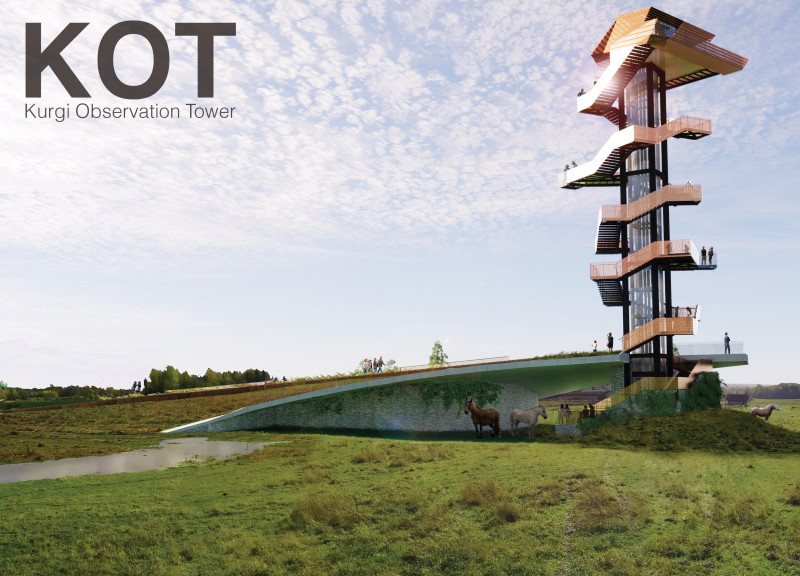5 key facts about this project
The Kurgi Observation Tower (KOT) is located in the North Vidzeme Biosphere, designed to connect visitors with nature. The tower has a clear purpose: to offer unique viewpoints for observing the landscape. Its design encourages accessibility, making it easy for people to move from the parking area to the tower and engage with the natural surroundings.
Design Concept
The tower consists of several four-sided stair runs, which are set at different angles on each level. This layout creates varied viewpoints for visitors as they ascend, allowing them to see the landscape from different heights. Each step up brings a new perspective, adding to the sense of exploration and curiosity.
Observation Points
At the top of the tower, there are four observation points that stand as ideal spots for taking in the views. These areas invite visitors to stop and appreciate the scenery around them. Such a design not only enhances the aesthetic experience but also helps create a meaningful engagement with the environment.
Materiality
Transparency is a key aspect of the design, achieved through careful material selection. The tower features layers of perforated steel plate and glass, which help to blur the lines between the structure and the landscape. This approach enables an open view for visitors, allowing them to feel connected to their surroundings while experiencing the architecture itself.
Structural Integration
The tower is anchored by an earthen base that contrasts with the lighter materials above. This relationship between heavy and light elements helps ground the structure in its rural setting. At the very top, a thatched cladding element provides shelter from the weather, ensuring visitors are comfortable without losing the sense of being outdoors. The design details encourage visitors to engage with both the architecture and the landscape, creating a harmonious experience.





















































